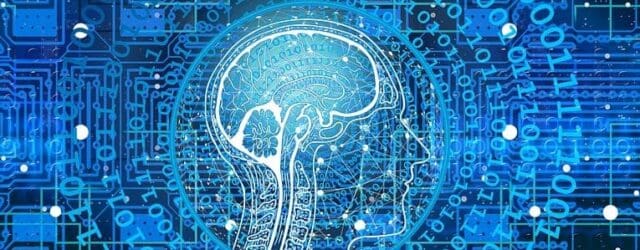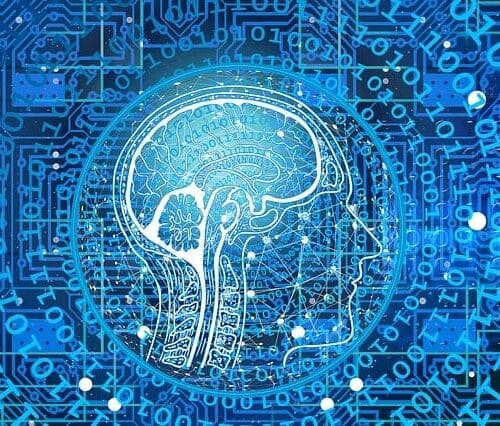Harnessing AI for safer construction: balancing innovation with regulatory compliance
July 2024Introduction
This update summarises the Health and Safety Executive’s (HSE) current and ongoing approach to the use of artificial intelligence (AI) in the health and safety industry and, specifically, the construction and consultancy spheres.
AI is a natural progression of the modern-day and fast-paced technology driven world that we operate in. The health and safety industry is no exception to this. AI is simultaneously creating and reducing risks at work, and the new opportunities it brings appears to know no bounds.
Following the recent publication of the HSE’s article (HSE’s regulatory approach to Artificial Intelligence (AI) – News – HSE ), together with examples, we summarise the key points for consideration.
What does the HSE do?
The HSE is national regulator for workplace health, safety and welfare. It aims to prevent workplace death, injury or ill health. The HSE:
- Provides advice, information and guidance.
- Raises awareness in workplaces.
- Operates permissions and licencing activities in major hazard industries.
- Carries out targeted inspections and investigations.
- Takes enforcement action to prevent harm and hold those who break the law to account.
The last bullet point is topical when we start thinking about the use of AI in the health and safety industry or sectors, such as construction and engineering. How do we ensure AI, or those behind or using AI, are held accountable?
Key points from the HSE’s publication on AI:
The Health and Safety at Work Act 1974 applies to the workplace, whether it is people or technology being used to perform tasks. It therefore encompasses AI.
The HSE reinforces the important principle of health and safety law – that those who create risks are best placed to manage and control them in a sensible, proportionate, and pragmatic way.
Risk assessment and managing risk
The HSE seeks to reach a point where AI risks are no longer novel and are simply managed in the same way as other risks.
Consequently, the HSE expects organisations to undertake a risk assessment for use of AI which impacts health and safety. Once a risk assessment has been undertaken, the HSE expects that appropriate controls will be put in place to mitigate and reduce risk as far as is reasonably practicable, including addressing cyber security threats.
HSE’s ongoing and developing approach to the regulation of AI
The HSE have set out how they are developing their regulatory approach to AI, including:
- “co-ordinating work on AI, sharing knowledge and identifying key issues through an internal AI common interest group, bringing together colleagues from across HSE
- working with government departments to shape the approach to AI regulation
- supporting the standards making process, to establish benchmarks for AI interaction with machinery and functional safety by engaging with international standards organisations (BSI, IEC and ISO)
- establishing relationships with industry and academic stakeholders, to share knowledge and learning on AI use cases and the impact on health and safety
- collaborating with other regulators, though forums including the AI Standards Forum for UK Regulators, Information Commissioners Office AI Regulators Forum and the United Kingdom Health and Safety Regulators Network Innovation Sub-Group, to encourage a consistent regulatory approach
- identifying AI developments of interest to HSE through horizon scanning activities and monitoring AI developments in Great Britain and around the world, from a practical and regulatory perspective
- building our capability and experience in AI across specialist and scientific areas of HSE and working with partners as appropriate
- supporting research bids that align with HSE’s areas of research interest (on GOV.UK) and help develop safe use of AI and the ability to regulate AI use
- setting up and trialling of an Industrial Safetytech Regulatory Sandbox (on discoveringsafety.com) to explore practical barriers to adoption of Industrial Safetytech in construction and how to break them down”
In due course we expect to see further updates from the HSE on the work they are doing to ensure that AI is beneficial within the workplace, whilst limiting its risks.
We may also see additional information from the government around digital and AI aspects. For example, the recent Background Briefing to the King’s Speech referenced that “…We will level up workers’ rights, so every person has security, respect and dignity at work… and we will harness the power of artificial intelligence as we look to strengthen safety frameworks….”[1]. Notably, there was no express reference to the earlier Artificial Intelligence (Regulation) Bill which was previously being considered by Parliament but did not pass into law during the last session.
Some examples of how AI technology is already making the construction industry safer
When AI is properly regulated and used safely, there is hope that it can make the construction or engineering industry safer, for example:
- Exoskeleton suits to reduce injury risk. These suits provide protection and support workers by easing pressure on the lower back and core, but also helping to lighten the burden put on the body and back from heavy lifting.
- The British Safety Council[2] have considered whether AI can eliminate workplace collisions and explained that AI technology is now being deployed by teams to immediately warn mobile plant operators on construction sites of the presence of pedestrians, therefore adding a new layer to transport safety. “The AI system is installed onto plant or machinery and detects the human form, acting as a third eye for the operator. Different visual and audible alerts go off in the cab if a person enters the machine’s amber (outer) zone or red (inner) zone, at which point a collision is imminent.” It is understood that the AI collision avoidance system has been fitted in more than 5,000 items of plant machinery in the UK with zero reported accidents.
- Drones and technology have previously been used to complete site inspections and other services. This technology can also be used by emergency services teams in search and rescue and other safety exercises.
- Clients, contractors, and consultants are using virtual reality to improve health and safety site inductions and training. We understand that Willmott Dixon introduced virtual reality into their training in 2023[3].
Concluding comments
Whilst we welcome the change that AI can bring to improve safety in the construction industry and the workplace in general, these improvements can only happen when the AI itself is regulated and monitored adequately. The HSE will therefore play a vital role in the coming years in ensuring that AI complies with the Health and Safety legislation in the UK. Whilst AI clearly represents an opportunity to keep up to speed with clear industry trends and the future of construction technology, the suitability of any new and innovative technology needs to be properly reviewed and its use effectively controlled to ensure that there is an overall reduction in the risk profile of any work activity. Appropriate risk assessments and training will also need to be completed and recorded by businesses or users to comply with contractual terms and conditions, statutory requirements, and other corporate requirements.
For our clients, when considering the use of AI and other online platforms, it is important to understand any intellectual property, commercial or insurance (including professional indemnity insurance and cyber) risks, as well as any access or evidential risks in respect of projects. This position is particularly acute in respect of health and safety investigations and prosecutions, as well as building safety matters. In addition, there are often gaps and inconsistencies in respect of contract terms and liability positions when you compare construction contracts to AI/digital/software contracts. There are also other specific legal requirements to bear in mind when using drones, including airspace and data protection concerns.
It is possible that businesses may be negatively impacted by the rapid pace of change. A failure to adopt or keep up with AI and other technologies may mean businesses fall behind the curve on certain health and safety matters. For example, if an investigation determines that there was a safer system of work, or risk mitigation measure, which could and should have been deployed by a team working on a site (i.e. following an accident or incident on site), it is possible that the parties or persons involved may face scrutiny or claims/prosecution as a result. Often contracts contain strict liability obligations in respect of health and safety matters, aside from the relevant legal and regulatory compliance requirements for construction professionals. There are also significant commercial and reputational reasons as to why businesses may wish to keep abreast of key AI and technological changes.
As an aside from the above, AI also formed a core subject of our recent Architects Roundtable event: for more information, please see our summary note. Should you have any queries in respect of the content of this summary, or how it might apply to your projects or contracts in practice, please contact the authors or your Beale & Co lawyer.
We have specialist expertise in construction and insurance matters, specifically health and safety and digital issues in practice. We will be releasing future materials and updates on health and safety matters over the coming months.
[1] Background Briefing Paper, The Prime Minister’s Office, 17.07.2024, page 4.
[2] Can AI eliminate workplace collisions? | British Safety Council (britsafe.org)
[3] Rise of the machines: the technology making work at height safer | Construction News
Download PDF








